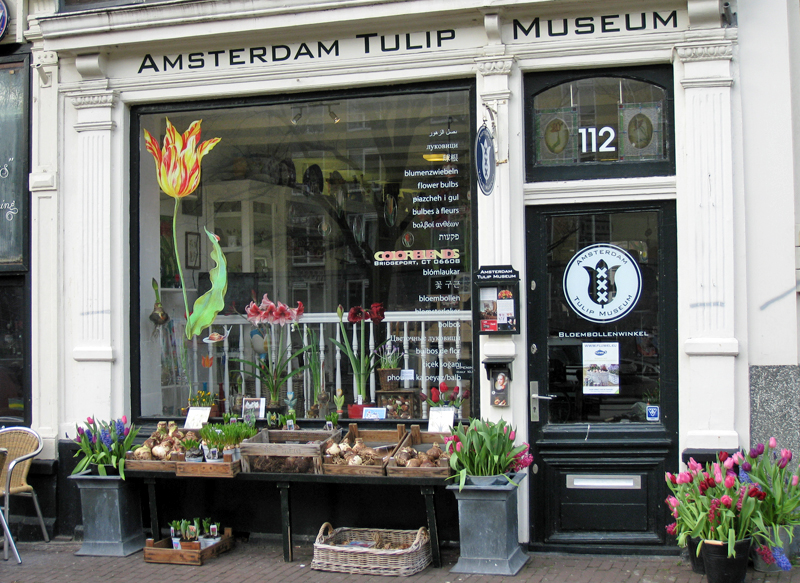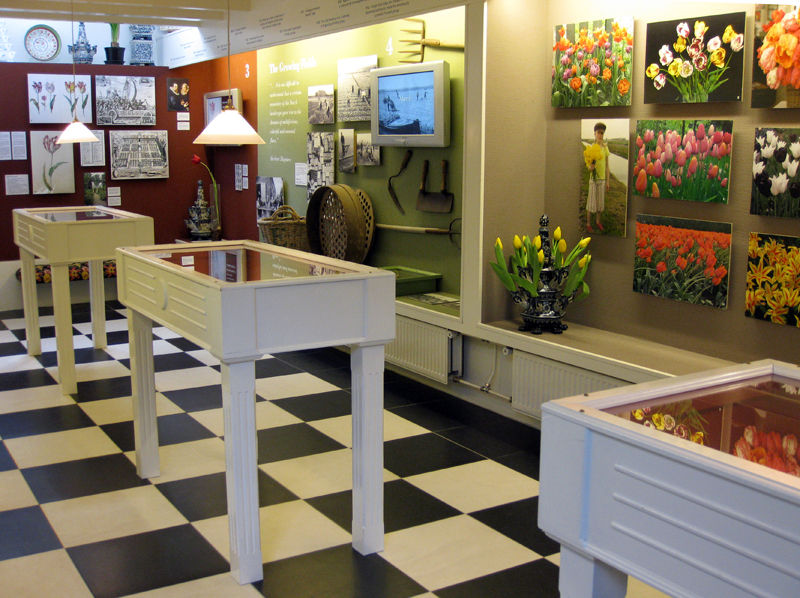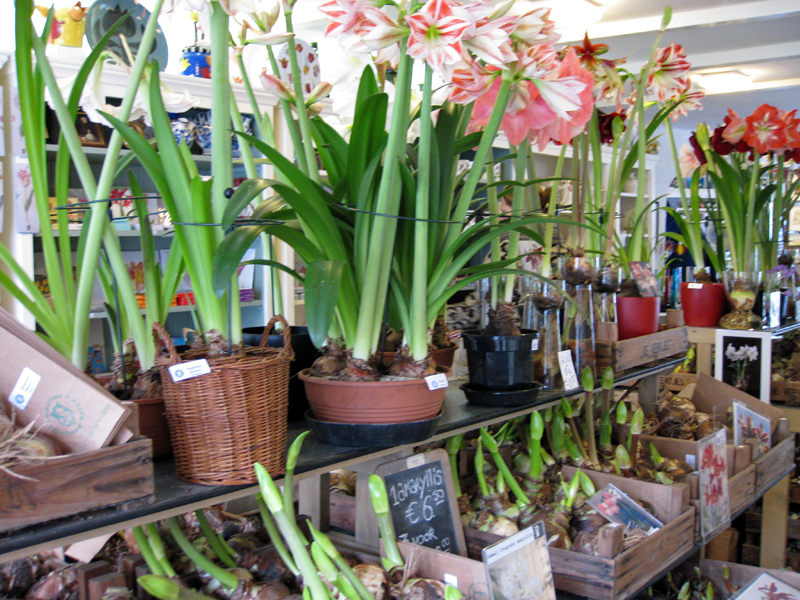Amsterdam Tulip Museum learn about tulips
The Amsterdam Tulip Museum tells the history of the tulip. This small museum is on Prinsengracht opposite Anne Frank Museum. On entering, a kaleidoscope of colours greets you, red tulips, white lilies and golden daffodils. You may think that you are in the wrong place. The tulip Museum is both flower shop and museum.

The Amsterdam Tulip Museum
Multimedia presentations on several LCD screens give detailed information about the cultivation and the history of tulip. You will learn how the tulip became trendy in 17th-century Amsterdam and was the object of speculation, how bulbs served to feed the people in the winter of 1944-1945 the last year of the Second World. The museum has a collection of tulip paintings by Judith Leyster, one of the few female painters in the seventeenth-century.
Tulips for your Garden
If you want to create your own Dutch garden at home, it is good to know that the shop stocks top quality Holland bulbs, export approved.
You plant your bulbs from September to November in a sunny spot, pointed end up, about 5cm apart. When the leaves have withered you dig the tulip bulb up. Clean off the soil and let them dry them. Store them in cool place and replant them in autumn.
No garden? Choose from the large collection of tulip-patterned tiles, postcards, posters and bags all with tulip decorations. They make the perfect gift and are a tangible souvenir of your stay in Amsterdam.

Tulip Mania in seventeenth-century
Amsterdam and tulips are inextricably connected. Although tulips are one of the best Dutch export articles, they are not endemic. The first tulips were brought to the Netherlands from central Asia via Constantinople and propagated in Hortus Botanicus (Botanical garden) of the University of Leiden. It turned out that the Dutch soil was highly suitable for growing tulips, and in 1594, the first flowering of tulips was documented.
Tulips as conversation topic
The 17th century was a period of unprecedented economic growth in the country. Growers outdid each other and competitions started who grew the most beautiful tulip. At the same time, households had more money to spend and rich merchants’ wives wanted to embellish their homes with flowers. Up to then it was not customary to have flowers inside the house, they were only in the gardens. Snobbery reigned supreme and no housewife wanted to be inferior to the other. Indoor flower arrangements were conversation topics.

Speculating and gaining a profit
People were ready to pay extraordinary sums of money for one single bulb and prices rose constantly. Speculators started selling batches of bulbs at a price higher than a canal house. It didn’t take long before almost everyone traded in tulip bulbs and with success. They did not buy the actual tulip bulb, but a contract for future delivery at a certain price, i.e. futures.
When the bubble burst
When, one day, a buyer didn’t show up and didn’t pay for his bulbs, the tulip showed cracks and finally burst. The tulip bulb fell from grace and panic arose. Within a few days, the bulbs were only worth a fraction of the price. The tulip madness was over and profits evaporated. Fortunately, the Dutch have never given up their love for the tulip. To this day, they are the largest bulb suppliers in the world.
Getting there
The Amsterdam Tulip Museum is located opposite the Anne Frank House, Close to Westerkerk.
Address, Amsterdam Tulip Museum, Prinsengracht 116, Amsterdam
Opening Hours, Daily 10.00-18.00
photos: Marianne Crone



